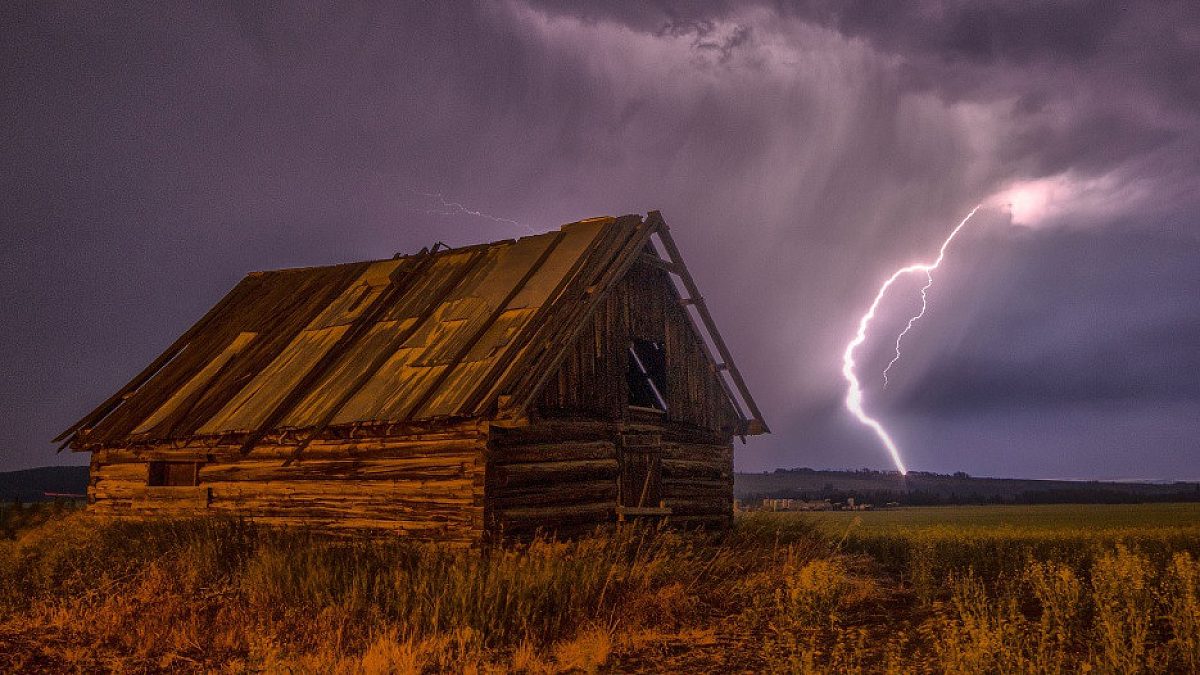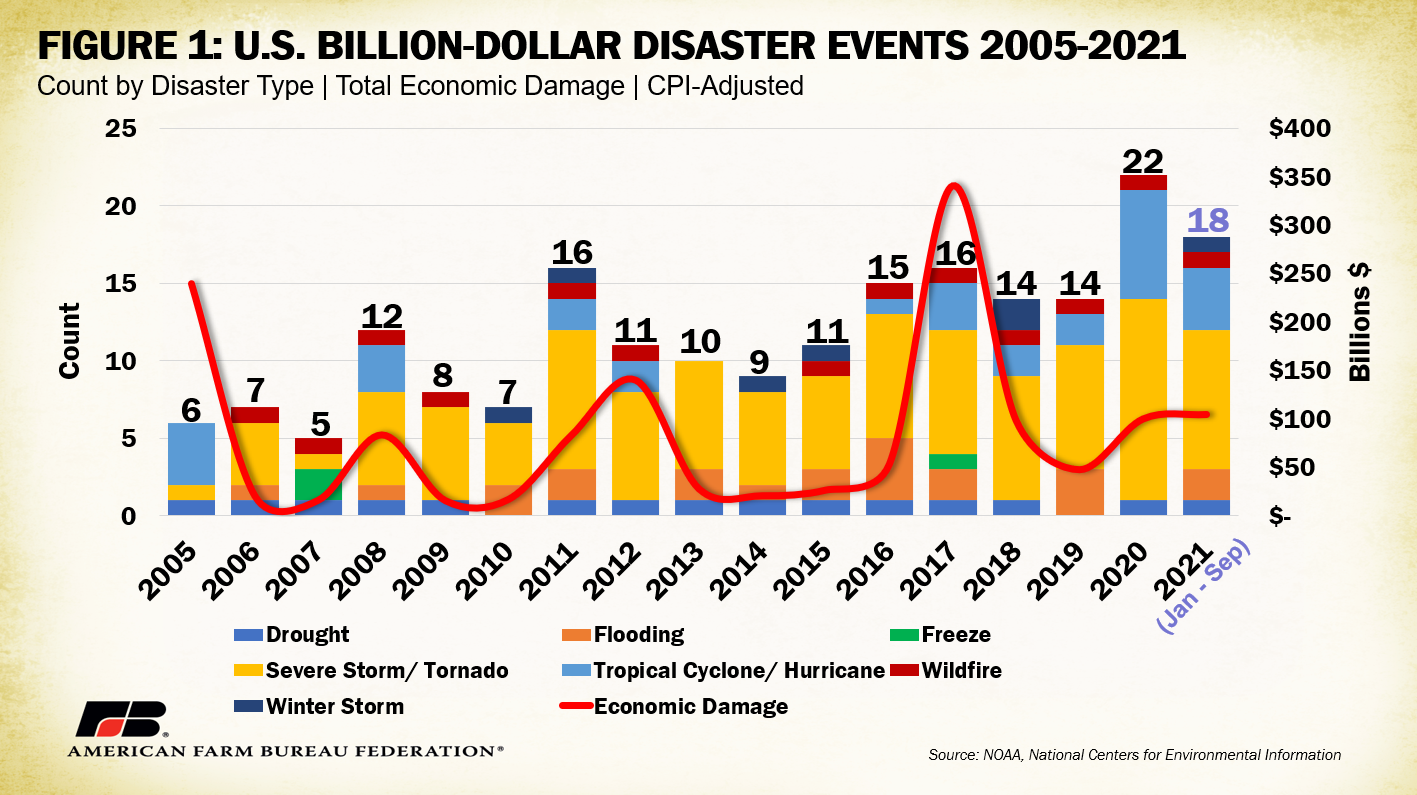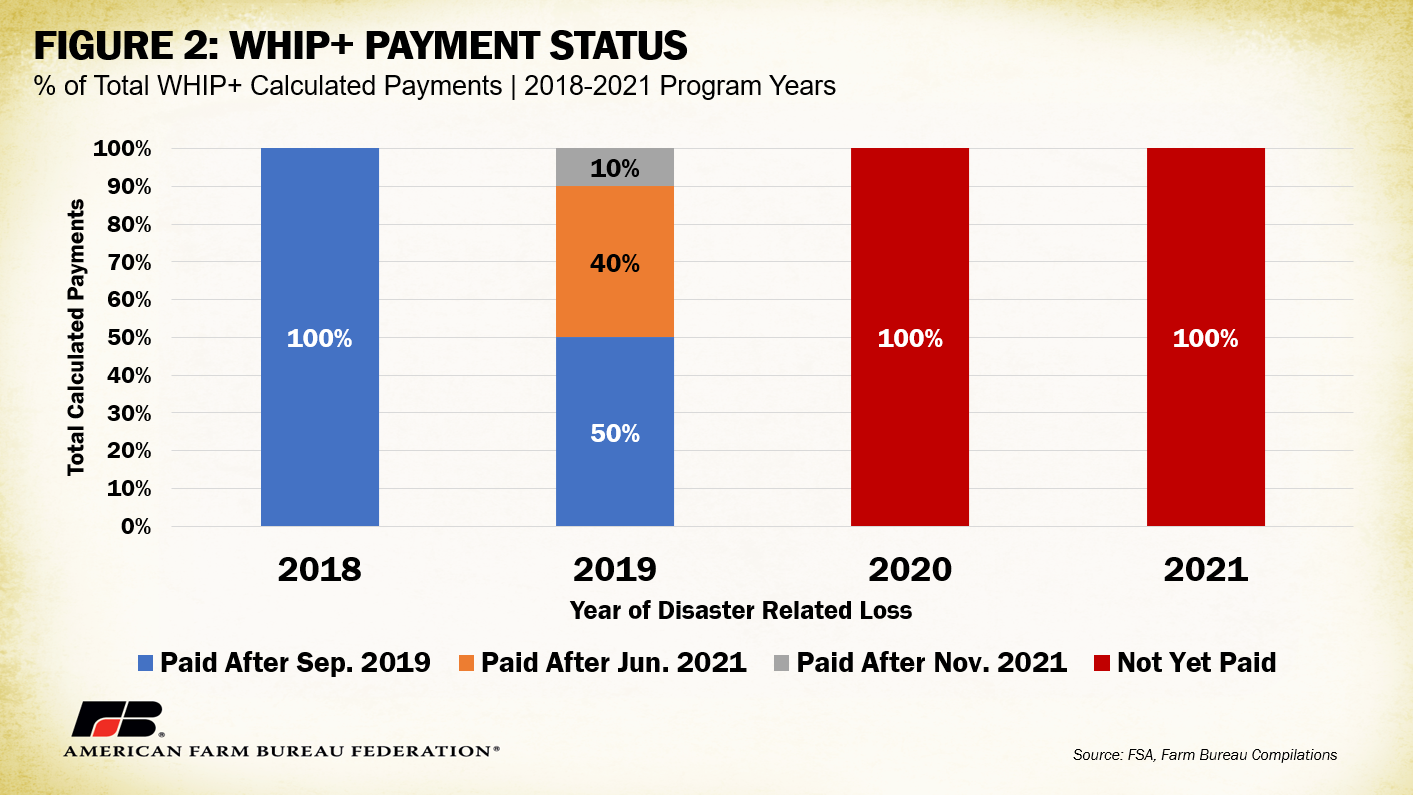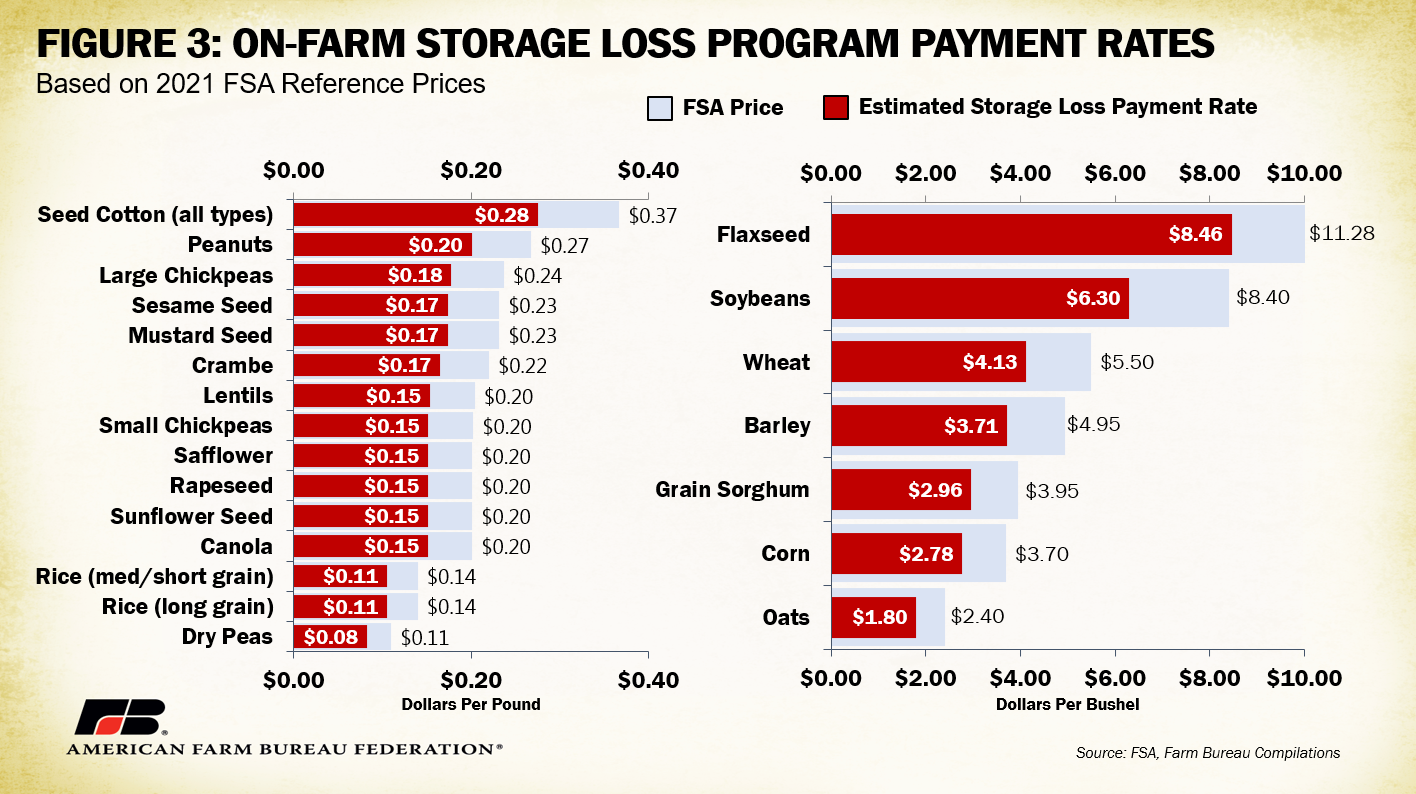Kentucky, Arkansas Tornadoes, Midwest Derecho Renew Calls for Timely Disaster Assistance
TOPICS
StillFarming
photo credit: NASA Goddard Space Flight Center / CC BY 2.0
Daniel Munch
Economist
On Nov. 8, USDA began rolling out over $185 million in final Wildfire Hurricane Indemnity Program + (WHIP+) disaster assistance payments to farm and ranch families who faced losses from 2019 natural disasters. A little more than a month later, on Dec. 10, townships across northern Arkansas and western Kentucky were struck with record-setting tornadoes that resulted in the loss of loved ones, destroyed homes and flattened barns and grain bins. Less than a week later, heavy windstorms across the heartland claimed additional lives and livelihoods. The over two-year wait for complete disaster assistance under WHIP+ has many farmers and ranchers wary about whether the recent extension of the program will help them recover from these recent storms. Today’s article provides an update and refresh on these disaster assistance programs, which are valued by farm and ranch families when they are delivered in a timely and efficient manner.
In the first three quarters of 2021 there were 18 weather disasters, each with damages reaching over a billion dollars. This includes widespread drought in the West, hurricanes across the Gulf Coast and numerous severe storms in between. With the most recent tornados devastating the South and a derecho sweeping the Midwest, this number will likely climb into the twenties - rivaling 2020’s record 22 billion-dollar weather events. Preliminary reports from the December tornadoes indicated the collapse of over 20 poultry barns and hatcheries, widespread damage to crop fields and fencing, killed livestock, damaged grain elevators and a destroyed Grain and Forage Center of Excellence at the University of Kentucky. In terms of total economic damage, the National Oceanic and Atmospheric Administration (NOAA) estimates 2021 has surpassed total economic damages from 2020, without even accounting for the disasters in the final quarter of this year (October- December). Total economic losses across 2020 breached $100 billion, while the first nine months of 2021 resulted in nearly $105 billion in losses. While recovery and assessment efforts are underway for the latest weather disasters, it is safe to say these events will easily surpass the billion-dollar economic impact threshold.

Traditionally, federal crop insurance programs are the preferred mechanism for managing risk associated with weather-related disasters for most agricultural products. These policies provide protection from yield losses, increased feeding costs and revenue declines. Unanticipated disaster situations like the COVID-19 pandemic or large-scale weather events pose the optimal test for these programs, designed to provide targeted risk management under more probable and common loss conditions. Losses that occur outside the scope of these conditions and the specified terms of a policy complicate farmers’ ability to qualify for indemnity payments. In 2020, 55%, or $3.6 billion, of estimated weather-related crop losses went uncovered by traditional crop insurance programs. Of total estimated severe thunderstorm and tornado crop damages ($203 million) nearly 30%, or $58 million, went uncovered in 2020. These gaps have driven the call for expanding cause of loss qualifiers for coverage and an extension of ad hoc disaster assistance programs like WHIP+.
WHIP+ has been discussed in previous Market Intels including: Reviewing WHIP+ and Other Disaster Assistance Programs, 2020 Disaster Estimations Reveal at Least $3.6 Billion in Uncovered Losses, 2020 Disasters Reveal Gaps in Ad Hoc Aid Legislation and Continuing Resolution Extends Disaster Coverage for Most 2020 and 2021 Losses. WHIP+ has its origins in the 2017 WHIP and was established under the Additional Supplemental Appropriations for Disaster Relief Act of 2019 with $3.005 billion in funds alongside On-Farm Storage Loss, Milk Loss, and Tree Assistance programs. Producers who applied and were eligible under 2018 WHIP+ received 100% of their calculated payment on approval while those who applied and were eligible under 2019 WHIP+ received only 50% of their calculated payment. Note that official signup began Sept. 11, 2019, meaning well over a year had passed before applications were even submitted from producers who faced disaster conditions in early 2018. After the initial 50% of payouts were made for 2019 applicants, it was not until June 15, 2021, that these producers began receiving an additional 40% of their total indemnities. This means farmers and ranchers waited over two years to receive 90% of their calculated payments. Numerous billion-dollar weather events took place during this time including harrowing wildfires across California, Oregon and Colorado, the Iowa derecho and hurricanes Delta, Hanna, Laura, Zeta and Sally. As mentioned in the introduction, on Nov. 8, USDA began making roughly $185 million in final 2019 WHIP+ payments, marking the third and final 2019 WHIP+ payment equal to the final 10% of producers’ full calculated payments. Producers who faced losses in early 2019 have waited nearly three years to receive 100% of their indemnities. Budget and administrative constraints are being blamed for the delays. Though producers who have lost their entire livelihoods or close to it have little patience for any excuses, these reasons are particularly biting.
On Sept. 30 President Biden signed a continuing resolution into law with a retroactive extension of disaster assistance programs, including WHIP+, the On-Farm Storage Loss Program, Milk Loss Program and Tree Assistance Program, through 2020 and 2021. The law appropriates $10 billion out of the treasury to the office of the secretary of Agriculture for these programs and expands WHIP+ coverage for additional causes of loss including derechos, winter storms, polar vortexes, freeze, smoke exposure and quality losses for crops. Losses due to drought are also eligible if they occurred in areas rated by the U.S. drought monitor as D2 (severe) for eight consecutive weeks or D3 (extreme drought) or higher at anytime during the applicable calendar year. Though strongly appreciative of this extension and expansion, many producers have expressed dwindling confidence they will receive assistance when they most need it. Reports of widespread staffing shortages in Farm Service Agency offices have further reduced this confidence. Though FSA has not yet announced timing for 2020/21 WHIP+ or related program applications, many consider spring 2022 the earliest possibility.

Damaged grain bins during the latest Kentucky tornados re-emphasize the paralleled importance of the On-Farm Storage Loss Program, which provides payments to producers who suffered a loss of harvest crops stored in on-farm structures. Like WHIP+, specific details of the extended On-Farm Storage Loss Program have yet to be released. The previous iteration provided impacted producers with a direct payment equal to 75% of the Farm Service Agency payment price. Covered commodities align with those covered under farm bill programs and include but are not limited to corn, soybeans, wheat, rice, seed cotton, peanuts and grain sorghum. Figure 3 highlights On-Farm Storage Loss Program payment rates if the extension uses 2021 FSA reference prices.

Conclusion
A recent extension of disaster assistance and associated coverage for additional weather-related conditions is welcome news to farmers and ranchers recovering from 2020 and 2021 disasters. The $10 billion appropriated in the continuing resolution for both years surpasses uncovered crop loss estimates previously analyzed by AFBF – though final 2021 impacts remain unassessed, especially given recent devastating events across the South and Midwest. As USDA moves forward with program administration and implementation, timeliness and efficiency should be the central focus. Many farm and ranch families impacted by these natural disasters risk operational insolvency and may not survive the multiyear wait common under previous iterations of ad hoc disaster assistance. Ensuring WHIP+ and other disaster assistance program extensions provide adequate and timely support is vital – not only for farm-level stability but for a safe and secure domestic food supply.
